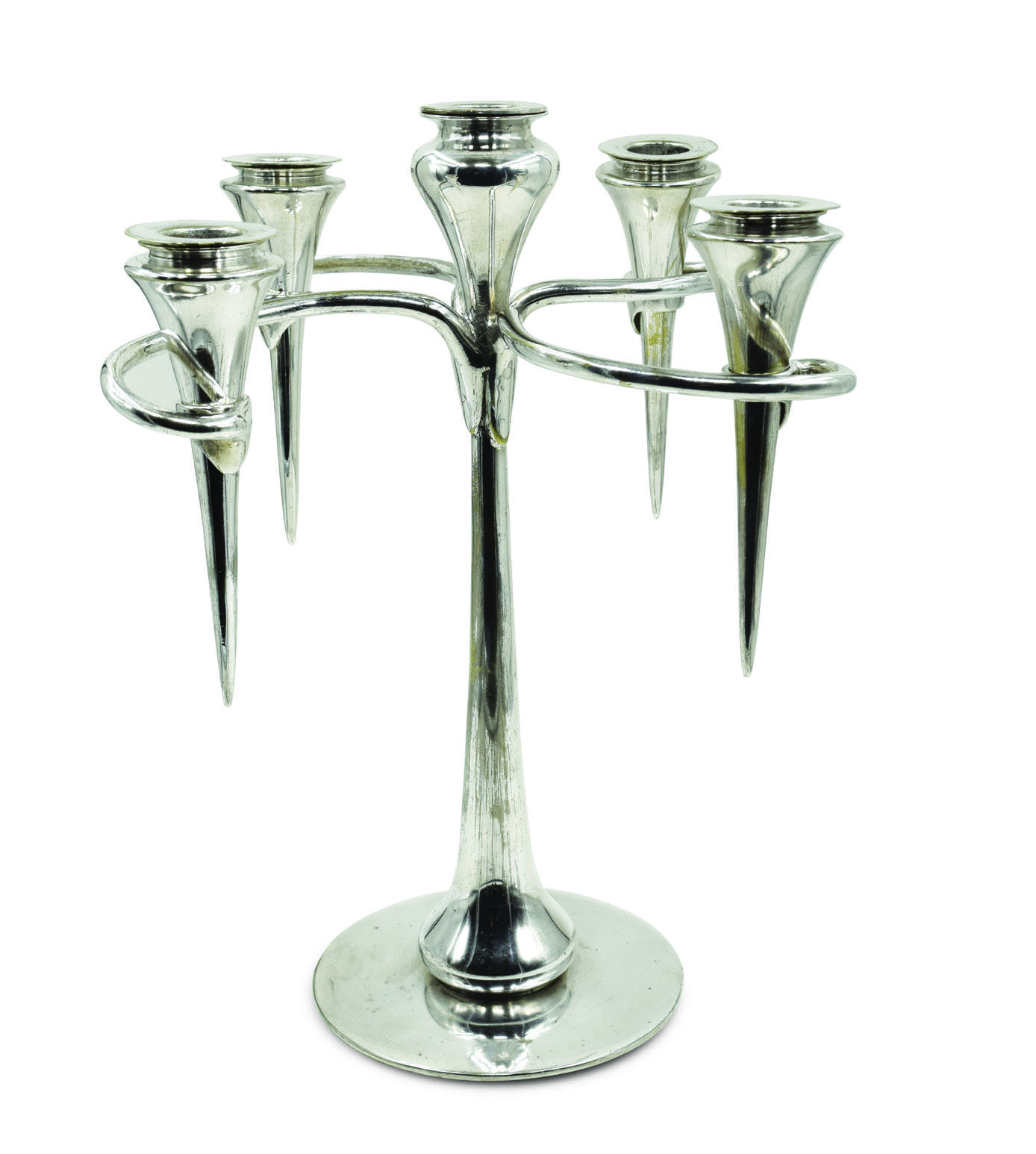Item Composition
Other
Item Medium
Silver
Item Origin
Chicago, Illinois
Item Duration at Mansion
Temporary
Summary
Silver plated , 14 × 12 × 12 inches. Private Collection
Item Composition
Other
Item Medium
Silver
Item Origin
Chicago, Illinois
Item Duration at Mansion
Temporary
In 1907, a group of Chicago artists, musicians, poets, architects, and art enthusiasts founded The Cliff Dwellers Club as a place to engage in lively discussion in a clubhouse perched on the peak of an urban cliff, or skyscraper. When the club moved into a penthouse atop Orchestra Hall in 1909, they adopted Native American motifs as appropriate décor, commissioning a mural of a Navaho family, and designing Indian motifs for china and napkins used in their dining room, the Kiva. To celebrate the club's third anniversary, president Charles L. Hutchinson commissioned a punch bowl from metalsmith and fellow member Robert Riddle Jarvie. This stunning handwrought silver bowl emulates the corrugated baskets handwoven by the Anasazi, examples of which Jarvie could have seen at the Field Museum.
Apparently Jarvie's aptitude for metalworking came instinctively, for there is no record of his receiving any formal training. Born to Scottish parents in New York, Jarvie moved to Chicago from Minneapolis in 1893. He worked for the city's Board of Transportation, and was promoted to superintendent in 1901. Occupying his leisure hours with various crafts, he began experimenting with metalworking in 1900. That year he exhibited his work in the Third Annual Chicago Arts and Crafts Exhibit at the Art Institute of Chicago.
Jarvie and his wife, Lillian Gray, operated a series of home workshops until 1905, when they opened The Jarvie Shop. By then he was nationally known as "The Candlestick Maker" for the elegant cast brass, bronze, and copper candlesticks he exhibited in regional Arts and Crafts exhibitions and advertised in homemaker magazines. In 1910, the shop began offering objects handwrought in silver as well as copper and brass after hiring John P. Petterson, a skilled Norwegian-trained Swedish silversmith.
Jarvie's ability to create unusual and appropriate presentation pieces attracted the attention of Arthur G. Leonard, president of the Union Stock Yard Company, who invited him to move his business to the Chicago Stock Yards in 1912. There he created trophies for the International Livestock Exposition and other competitions, in addition to cast and handwrought tableware, library accessories, sconces, and lighting fixtures.
When the United States entered World War I, Jarvie closed his shop and served in France and England under the auspices of the National War Work Council of the YMCA.
After the war, Jarvie worked as a salesman at C. D. Peacock in Chicago, while his wife was employed as a secretary at Northwestern University in Evanston. When she retired, the couple moved to the Scottish Old Peoples Home in North Riverside, where he died in November 1941.
Item Composition
Other
Item Medium
Silver
Item Origin
Chicago, Illinois
Item Duration at Mansion
Temporary


